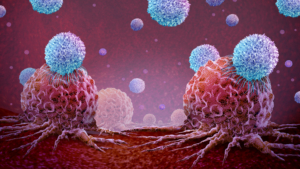
EG 427 expands Series A closing to €18m
Paris-based gene therapy vector specialist EG 427 SAS has closed a Series A financing at €18m raising additional €5m in the final closing.
EF 147, which got the additional €5m from undisclosed existing investors and new family office investors, is going to finance preclinical work upon an IND expected in Q1/2024 for its lead procuct candidate EF110A to treat neurogenic bladder overactivity by exclusively silencing type c neurons by delivering botulinum toxin F light chain (BoNT/F LC) instead of blocking bladder mucle activity. This might prevent urinary retention and subsequent infections that are often observed upon standard treatment.
The French gene therapy specialist has developed non-replicative Herpes Simplex Virus type 1 (nrHSV-1)-based vector, as an alternative to AAV vectors. nrHSV has a natural tropism towards specific types of neurons and thus might inactivate them specifically with less adverse side effects than other vectors. EG110A is first being developed in urology indications. Earlier stage products are focused on modifying the neurotransmission of other subsets of neurons.
The funds raised will be used to advance our pipeline, said Philippe Chambon, Founder, Chairman and Chief Executive Officer of EG 427, “culminating in the Investigational New Drug application filing in Q1 2024 for the first clinical study of our lead product, EG110A. Thanks to our unique ability to deliver gene therapies to targeted tissues with pinpoint accuracy, EG110A could become the first gene therapy product to treat neurogenic bladder overactivity and other bladder pathologies. It also could become the first gene therapy targeting a chronic disease with high morbidity in a large, underserved patient population to reach the market. Neurogenic bladder overactivity affects subpopulations of multiple sclerosis, Parkinons’s patients, and those with spinal cord injuries.
Compared to other experimental therapeutics at this stage of development, EG110A is de-risked by two key precedents,” said Cornelia Haag-Molkenteller, Chief Medical Officer of EG 427. “First, the way EG110A exerts efficacy is similar – but with potential critical improvements in safety and efficacy – to a surgical option for this condition, called sacral dorsal root rhizotomy; and, second, the recent FDA approval of the first non-replicative HSV-1 vector gene therapy confirmed that this approach has strong therapeutic potential outside of cancer.”
According to EG 427 SAS, EG110A has shown proof-of-concept efficacy in multiple relevant preclinical models. Separately, its mechanism of action, the silencing of sensory neurons, has been clinically validated by a surgical procedure known as a sacral dorsal root rhizotomy, which is almost never used since it leads to other impairments. The surgical technique severs dorsal nerve roots in the spinal cord and is not selective for bladder sensory neurons the way EG110A is.
Later this year, EG 427 will be initiating a Series B fundraising to finance clinical development of EG110A and advance other pipeline products.


 EIB, Oscar Romano
EIB, Oscar Romano freshidea / Adobe Stock
freshidea / Adobe Stock adobe.stock.photos - Yurii Kibalnik
adobe.stock.photos - Yurii Kibalnik